Pequenas cenas interessantes que lhe darão uma estranha sensação de prazer.
Duvida?
Pequenas cenas interessantes que lhe darão uma estranha sensação de prazer.
Duvida?


Ahead of Destiny 2's release this coming September, Funko Pop! Vinyl will release a collection of Destiny figurines this summer. ...Read More
The post Destiny Funko Pop! Vinyl Collection Coming This Summer by Ryan Meitzler appeared first on DualShockers.

Mas dá pra ganhar a vida empilhando bis e bolacha cremcraque?
The post Engenharia de alimentos appeared first on Le Ninja.
Conversamos com Han “Peanut” Wang-ho, jungler da SKT e um dos jogadores mais carismáticos do MSI 2017 no Rio de Janeiro.
O sul-coreano ficou conhecido por além de ser um excelente jogador, estar sempre sorrindo durante os jogos. Durante a coletiva, um dos jornalistas perguntou para Peanut o motivo dele estar sempre sorrindo. Ele conta: “Mesmo quando estou perdendo eu tento sorrir pois eu não fico tão triste e tento passar esta coragem para meus companheiros de equipe.”
Peanut também comentou sobre os outros junglers do MSI. Ele acredita que todos presentes são ótimos pois estão no topo de suas regiões, e completa: “Eu acredito que sou melhor que os outros junglers então ligo para quem eu estiver enfrentando.”
Durante a sexta partida da SKT no MSI, o jungler foi simplesmente incrível e terminou a partida com 15 abates nas mãos de seu Lee Sin. A SKT segue invicta no MSI após três dias de competição.
Veja as datas e horários do MSI 2017 no Mais e-Sports
The post Peanut conta que sorri mesmo perdendo para encorajar seus companheiros de equipe appeared first on Mais e-Sports.

Diogo Machado é um artista português que se especializa na pintura criativa em azulejos. O resultado é magnífico e belo. Basta passar pela sua conta do Instagram para ficarmos maravilhados com os frutos do seu trabalho.
Recentemente, Diogo Machado organizou uma exposição em Lisboa e uma das peças de exibição presta tributo a Destiny. Diogo Machado é um fã do jogo da Bungie e homenageou a sua personagem (um Hunter) ao pintá-la num azulejo.
Combinar algo tão moderno com uma arte tradicional parece bizarro, mas o resultado é curioso. O toque da vela à frente do azulejo, bem como o manto que o Hunter tem vestido, dá um aspecto quase religioso a esta peça.

Some animals are born with natural camouflage that allows them to hide in their native habitats. But what happens when the ebb and flow of the daily tides is constantly changing your home turf? If you’re the the decorator crab, you simply grab whatever sea plants you can find and use them to disguise yourself.
 "iPhone 8" mockup with rear Touch ID sensor by Benjamin Geskin
"iPhone 8" mockup with rear Touch ID sensor by Benjamin Geskin
While we are positive on potential replacement demand triggered by OLED iPhone, it's too early to determine if demand will shift fully in that direction. We recommend investors keep tabs on the following issues: (1) whether the 3D sensor of OLED iPhone provides an innovative user experience; (2) whether OLED iPhone cancels Touch ID (fingerprint recognition); and (3) whether Apple's competitors launch more innovative products which could compete with OLED iPhone in 4Q17-2Q18.It is not unusual for us to hear rumors of production delays and supply shortages ahead of an iPhone release, and indeed, the iPhone 7 Plus was constrained for months after its launch, but the warnings about the iPhone 8 are popping up more frequently from trusted sources and are more dire than warnings we've seen for past iPhone release cycles.

You may have heard the myth that biting into a Wint-O-Green Lifesavers produces visible sparks in a dark room. It’s hard to believe that a small candy can produce its own lightning, but this incredible high-speed video by Smarter Every Day reveals it’s just simple science at work.

Quem te viu, quem te vê, Microsoft: a outrora gigante malvada do mundo da computação voltou às suas origens, reaprendeu a ser legal, a lançar produtos interessantes e até mesmo a voltar atrás em decisões que até, digamos, cinco anos atrás, pareciam gravadas na pedra como mandamentos da empresa. Quer uma prova?
Pois eu lhe dou duas, ambas vindas do evento realizado por Satya Nadella e sua turma esta manhã, em Nova York.
Era a ele que eu me referia quando falei dos mandamentos gravados em pedra. Sabe aquela imagem do Windows que você (provavelmente) tem de um sistema absolutamente exposto a qualquer ameaça, aberto a qualquer fonte — bem-intencionada ou não — da internet e sempre a um passo de tornar-se infestado de malwares? Bom, a Microsoft está querendo mudar essa impressão com esta nova versão do Windows 10.

Trata-se, essencialmente, do mesmo Windows 10 de sempre — fechado, porém, a qualquer fonte que não venha da própria loja de aplicativos para o sistema. Se você quiser chamar de “iOS da Microsoft”, eu não irei repreendê-lo — embora, lembremo-nos, ainda estamos falando de um sistema operacional completo, com uma infinidade de programas e suporte a mouse; neste ponto, fica claro que o seu principal concorrente é, na verdade, o Chrome OS e os cada vez mais populares Chromebooks.
O foco da Microsoft com o Windows 10 S são estudantes e usuários casuais, que não precisam utilizar softwares especializados ou não querem instalar jogos de fontes externas. Os ônus e bônus são claros: se por um lado perde-se a flexibilidade quase infinita do Windows, por outro, o ganho na segurança é basicamente total, já que estamos falando de um sistema essencialmente fechado e imune a ameaças externas.
Além disso, o Windows 10 S é significativamente mais rápido, por rodar todas as aplicações em sandbox e apresentar um foco renovado na administração dos recursos — ou seja, caso um app esteja consumindo muita memória, o sistema irá automaticamente colocá-lo em repouso imediatamente para otimizar o funcionamento de tudo. Tudo isto, claro, é considerando o fato que esta versão do sistema será empregada principalmente em computadores educacionais e de baixo custo; a Microsoft afirma que haverá máquinas para o consumidor final de até US$189 com o Windows 10 S!
É bom notar que não estamos falando aqui de uma nova versão do Windows RT — o 10 S roda com tranquilidade qualquer aplicativo Win32; basta que ele esteja na loja da Microsoft. Caso o usuário sinta a necessidade de fazer a mudança para o Windows 10 tradicional a qualquer momento, entretanto, a gigante de Redmond não deixou de pensar neste detalhe — e facilitá-lo ao máximo: basta fazer o upgrade por US$49 (o preço no Brasil ainda não foi divulgado).
Você poderia pensar que, para apresentar o Windows 10 S oficialmente ao mundo, a Microsoft produziria uma máquina de baixo custo para equiparar-se aos mais baratos Chromebooks. Bom, caso você tenha pensado isto, deixe-me dizer que você está redondamente enganado: o Surface Laptop é o computador portátil mais “tradicional” da Big M até o momento, mas isto não significa que ele não seja, como seus irmãos, uma belíssima obra de engenharia de ponta — com um preço a caráter.
O computador, que pesa meros 1,25kg e tem 1,47 centímetros de espessura (ou seja, quase igual a um MacBook Pro de 13″), traz uma tela de 13,5 polegadas em proporção 3:2 e resolução de 2256×1504 pixels — o painel, é bom notar, traz total suporte à Surface Pen, mas não é destacável como no Surface Book. A máquina pode ser equipada com processadores Intel Core i5 ou i7 da geração Kaby Lake, até 1TB de armazenamento em estado sólido e até 16GB de RAM. A bateria, segundo a Microsoft, dura 14,5 horas(!!!), e, em termos de conectividade, temos uma porta USB 3.0 (nada de USB-C, por algum motivo) e Mini DisplayPort, além da porta proprietária Surface Connect.
Toda a parte externa da máquina é feita de alumínio, mas o interessante mesmo aparece quando abre-se a tampa: a superfície inferior do computador é revestida com Alcântara, um tecido de microfibra que guarda características semelhantes à lã e à seda — é o mesmo material que já equipa a Type Cover do Surface Pro. O Surface Laptop vem em quatro cores — Platinum, Graphite Gold, Burgundy (um tom de vinho) e Cobalt Blue — e seu preço inicial é de US$1.000 (~R$3.100, em conversão direta), com processador Core i5, 4GB de RAM e 128GB de armazenamento.
O Surface Laptop vem, como era de se esperar, com o Windows 10 S, mas a Microsoft está incluindo uma oferta especial para os primeiros adeptos da máquina: os seus donos poderão fazer o upgrade para o Windows 10 tradicional gratuitamente até o fim do ano, caso assim queiram.
[via 9to5Mac]

So today is May 4th, which is Star Wars Day, which is nice because Star Wars doesn’t get much attention. So, in honor of this important day, I want to address something that’s been gnawing at me for years. A strange detail, an obvious mistake hidden in plain sight for years and years, mocking me. Something that makes…

As smoke billows from your hood, you look down at your gauges to see the needle pegged in the red. Your engine is overheating because something in your cooling system has failed. In the final episode of David Dissects, I take apart and dive into an entire engine cooling system out of a junkyard Jeep Cherokee.


Yesterday, Poland-based developer Vile Monarch announced it has teamed up with fellow Polish publisher Crunching Koalas to bring its insult-‘em up simulator Oh...Sir! The Insult Simulator to PS4 and Xbox One. ...Read More
The post Oh…Sir! The Insult Simulator Announced for PS4 and Xbox One by Tyler Fischer appeared first on DualShockers.
Putz, acho que era a última vida HuASuhASuHASuASHuASHUA
 The music industry has struggled to adapt to the digital world over the past couple of decades, but it might just be hitting its stride again. The International Federation of the Phonographic Industry (IFPI) has published its annual Global Music Repo...
The music industry has struggled to adapt to the digital world over the past couple of decades, but it might just be hitting its stride again. The International Federation of the Phonographic Industry (IFPI) has published its annual Global Music Repo...
Em 2015, durante uma entrevista a Vice, um dos fundadores do Pirate Bay, o sueco Peter Sunde, jogou a toalha: “Eu desisto“, admitindo que tinha perdido uma guerra contra o “capitalismo”. Um dos sites mais famosos da internet é o pesadelo da indústria do entretenimento, que nos últimos anos, vem vencendo todas as batalhas contra a pirataria. Agora, até mesmo o pessoal que costuma legendar filmes e séries estão sofrendo os primeiros ataques.
É uma questão de tempo até o Torrent sumir da internet ou, como diria o personagem de Jeff Goldblum em Jurassic Park, “a vida sempre encontra um jeito“? Mas que atire a primeira pedra aquele que nunca baixou um Torrent sequer, e já que, pro bem ou pro mal, ele faz parte da cultura pop, que tal entender um pouco melhor as extensões desses arquivos?
Conversei com o Vinícius Colares, um cinéfilo defensor do Episódio I de Star Wars, e pedi que ele me explicasse os motivos por trás de cada extensão. Pois bem, aqui estão:

OS PIRATA.
Filmado de dentro da sala do cinema de alguma poltrona com filmadora geralmente de qualidade duvidosa, por que câmeras boas são grandes e chamam atenção demais, portanto, qualidade muito baixa, as vezes a imagem está inclinada, pessoas são vistas levantando das poltronas. Geralmente a fonte é de algum país asiático e o som pode ser gravado em outras sessões pelo mundo e depois sincronizado.
Também gravado do cinema, na maioria das vezes direto da cabine de projeção por algum funcionário que nunca vai ter a foto no quadro de funcionário do mês e por isso entrega imagem com um pouco mais de qualidade, a fonte do áudio também é de um pouco melhor qualidade, pela distância do público (o que evita a captação de risos ou gritos da platéia, por exemplo) ou por serem extraídas de poltronas com fones de ouvido para deficientes auditivos que alguns existentes em algumas salas de cinema. Geralmente semeadores de torrents no formato tem apenas um versão em CAMrip e mentem para você dizendo tratar de TS.
Quando a fonte do vídeo é extraída da gravação direta de algum serviço de streaming como Netflix, a gravação é feita da mesma maneira que gravam a tela do computador para tutoriais de youtube. Por mais que a fonte original tenha boa qualidade, a velocidade dos quadros geralmente pode apresentar defeitos provenientes da gravação. É o mesmo que HDrip, a nomenclatura vai variar de acordo com a preferência de quem está semeando.
A fonte também é proveniente da internet, só que com melhor qualidade porque é ripado de um arquivo baixado, exemplo, filmes alugados de serviços como o Google Play que você pode baixar para assistir, por isso a qualidade é melhor, semelhante a de um blu-rayrip.
A fonte é o disco original do filme, o que garante a melhor qualidade de som e imagem.
DVDrip
O mesmo do BDrip, mas com a fonte sendo o DVD que garante no máximo resolução em 480p.
É um arquivo inacabado do filme vazado antes da estreia, uma “cópia de trabalho”, os WPs mais famosos foram os de Tropa de Elite, que vazou com uma montagem preliminar diferente da final lançada nos cinemas e virou uma febre e o de X-Men Origens – Wolverine que vazou inclusive com algumas cenas sem efeitos especiais finalizados, com tela verde. São raros.
Lembram do formato R5 na época do DVD? É mais ou menos o mesmo, recapitulando o caso do R5 (“R5” vem de Região 5, região dos dvds russos), foi uma forma de evitar a pirataria na Rússia, o público russo se nega a gastar dinheiro com cinema então os estúdios lançavam dvds básicos em embalagens simples apenas com o filme dublado em russo, bem antes do lançamento em home vídeo no resto do mundo e a um preço em conta, assim os russos compravam o R5 ao invés de Camrips nos camelôs de lá. Por isso a imagem era boa para o padrão dvd e o áudio era ruim, pois como as cópias só tinham dublagem em russo, os piratas sincronizavam a imagem boa do R5 com o áudio ruim captado em alguma sala de cinema na América.
O caso do Korsub (Korean Subtitles) é semelhante, os filmes hollywoodianos não fazem muito sucesso lá, para se ter uma ideia O Despertar da Força estreou em segundo lugar nos cinema coreanos, a galera de lá prefere as produções nacionais (excepcionais por sinal), então uma forma de conseguir uma fatia do mercado e vender os filmes estrangeiros, foi adiantar a estreia em home vídeo em relação a outros mercados. Para dificultar a pirataria no resto do mundo, as legendas coreanas já vem embutidas. Por isso os primeiros rips com qualidade boa que você encontra na internet, são sempre “korsubs” e apenas 1 ou 2 meses depois que saem em web-dl ou bdrip.
Ripado de exibição em televisão em formato HD. Mais comum em séries de TV ou em filmes antigos nunca lançados em Blu-ray.
Ripado das antigas fitas VHS.
Ripado de cópias enviadas para críticos e votantes de festivais de cinema, por isso geralmente vem com a frase “for your consideration” ou com uma tarja escondendo a frase.
Espero que tenha sido útil.
E não se esqueça: pirataria é crime.
The post Aqui está o significado das extensões dos Torrent’s que você baixa appeared first on Amigos do Fórum.

Crash Bandicoot está há bastante tempo fora do mundo dos videojogos, mas este ano irá regressar com uma remasterização com o nome N. Sane Trilogy que chegará à PlayStation 4. O jogo está com um excelente aspecto, mas é sempre bom recordarmos qual era o seu aspecto quando foi lançado originalmente, e para isso nada melhor do que um vídeo comparativo.
Se cresceste nos anos 90 lembrar-te-ás que Crash Brandicoot foi lançado em 1996 na primeira consola PlayStation. Passaram-se mais de 20 anos desde então, e podemos ver agora neste vídeo como o jogo até que envelheceu bem. Óbvio que em N. Sane Trilogy tem muito melhor aspecto e parece conservar a essência do original.
No vídeo podemos ver as mudanças nos gráficos do jogo, apresentando mais densidade, cor e efeitos de luz. No entanto a jogabilidade parece ser a mesma do original, com as técnicas de salto e ataque a funcionarem da mesma forma que o original.
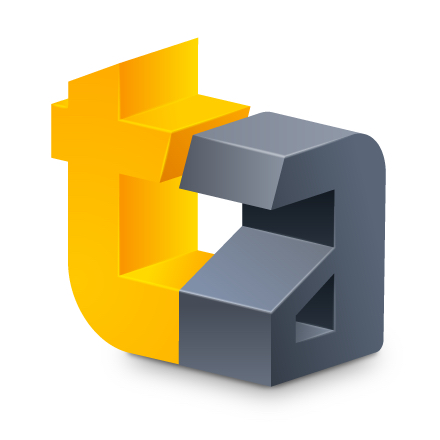 Hello, gentle readers, and welcome to the RPG Reload, the regular feature where we know iteration is the key to success. Last week, we took a look at the early history of the tactical RPG genre, covering the origins of many of its core concepts through to what is generally considered to be the game that established the genre, Nintendo's Fire Emblem. In that article, I also listed some features that I consider to define games in the TRPG genre, so I strongly encourage heading back and reading that piece before moving on with this one. In this week's article, we're picking up from where we left off last time and covering the genre's explosion in popularity in the 1990s. Both the East and the West (and by extension the console and PC sectors) would see little cottage industries spring up around their respective takes on the genre. Perhaps most remarkably of all, these two flavors of TRPG appear to have formed virtually independently of one another.
Hello, gentle readers, and welcome to the RPG Reload, the regular feature where we know iteration is the key to success. Last week, we took a look at the early history of the tactical RPG genre, covering the origins of many of its core concepts through to what is generally considered to be the game that established the genre, Nintendo's Fire Emblem. In that article, I also listed some features that I consider to define games in the TRPG genre, so I strongly encourage heading back and reading that piece before moving on with this one. In this week's article, we're picking up from where we left off last time and covering the genre's explosion in popularity in the 1990s. Both the East and the West (and by extension the console and PC sectors) would see little cottage industries spring up around their respective takes on the genre. Perhaps most remarkably of all, these two flavors of TRPG appear to have formed virtually independently of one another.
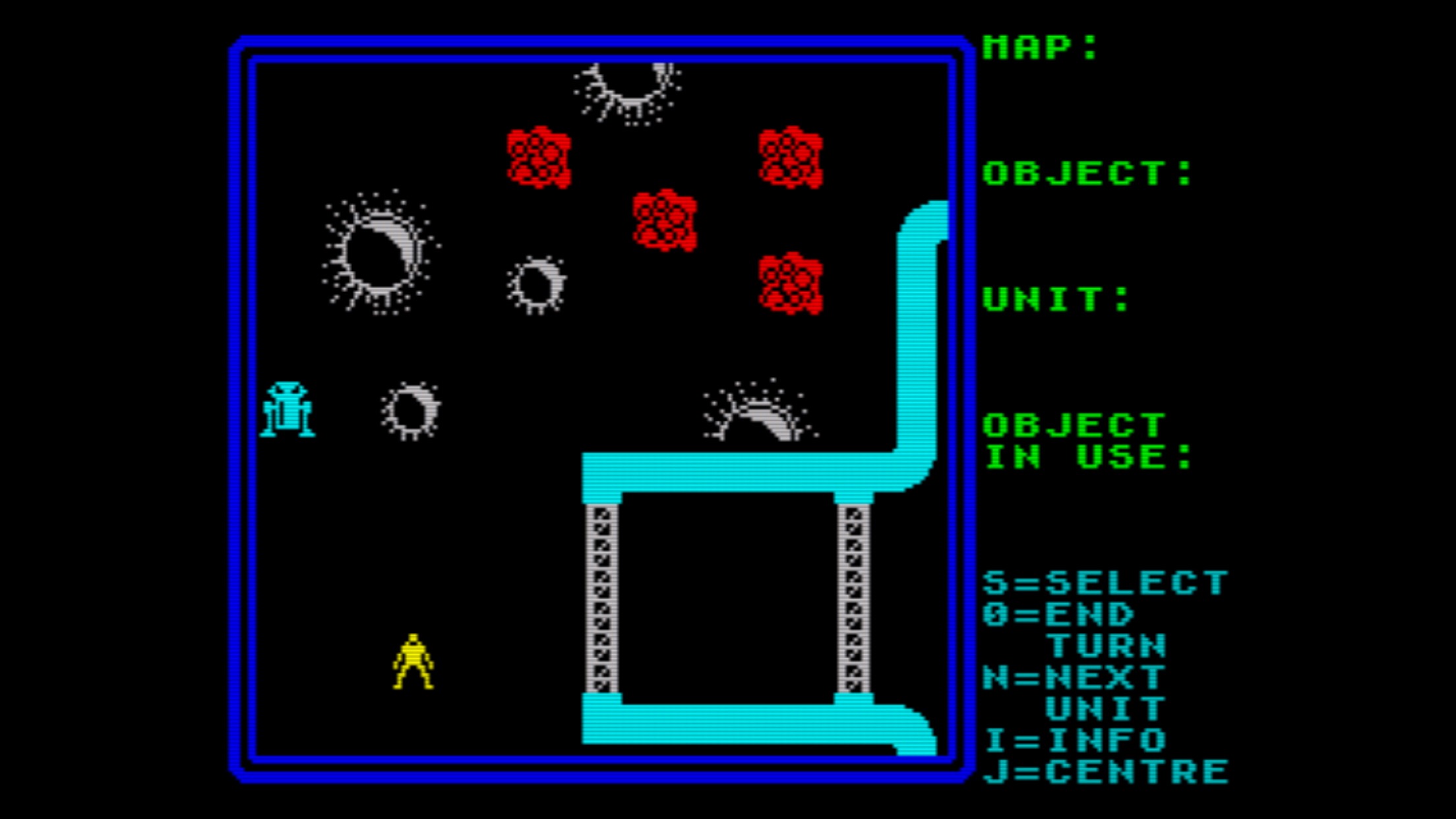
Despite their common origins, the console and PC game markets have, at times, been quite far removed from each other. The 1990s were perhaps the peak example of this separation. PC gaming was largely dominated by Western developers and publishers who only rarely bothered with console releases. Console gaming, on the other hand, was largely the province of Japanese developers and publishers whose forays into the PC end of the pool were even rarer. There are a lot of reasons why this separation occurred, such as language barriers, the sheer number of incompatible computer formats in the 1980s, cultural differences, and economics. It's a topic all of its own, frankly. For our purposes, it's simply important to note that heading into the 1990s, Japan was almost entirely on the console wagon, Europe was riding the home computer train, and America housed both, albeit with a thick wall between them. Things were very different from today.
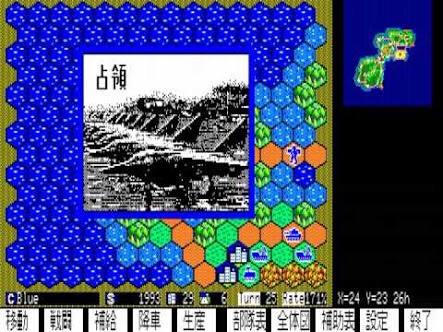
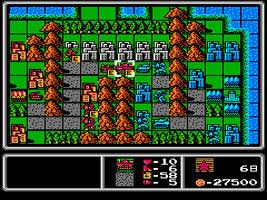
Daisenryaku & Famicom Wars
While both branches of the TRPG genre can trace their roots back to tabletop wargaming and Dungeons & Dragons, where they went from there nicely reflects that separation. In Japan, early computer games like Dragon and Princess, Ultima 3, and Bokosuka Wars proved quite influential in the formation of the RPG aspects of the genre. I covered that in detail last time, but there was another side of the coin that I perhaps didn't give enough credit to. Turn-based strategy games like Koei's historical simulations and SystemSoft's seminal Daisenryaku were really just a sprinkling of RPG elements away from closely resembling the genre as we know it. Daisenryaku was quite influential in the Japanese market, and developer Intelligent Systems' efforts to create a simple, accessible game of its type resulted in Famicom Wars, the first game in the long-running Wars series. It's best known in the West as Advance Wars, as the Game Boy Advance version was the first to see release outside of Japan.

Fire Emblem
Famicom Wars was the framework that was used to create Fire Emblem, which is sort of the Dragon Quest of console TRPGs. Fire Emblem was not an immediate hit. For a variety of reasons, it had a pretty slow start and got a cool response from many players and critics. Word of mouth and a game magazine writer's passionate odes to the game helped it become a relatively big success for Nintendo, but its influence had clearly started to spread among other developers before its sales really took off. Games influenced by Fire Emblem started to show up almost immediately. There was a unique opportunity here, as Nintendo opted not to release Fire Emblem outside of Japan. Its initial slow pick-up in sales, the fact that RPGs hadn't really sold as well in the West as Nintendo had hoped, and its somewhat late release in the 8-bit Nintendo console's life cycle were all likely big factors here. Fire Emblem would have been a big project in an unpopular genre on a piece of hardware on its way out the door.

Langrisser
Nintendo's inability to capitalize on Fire Emblem worldwide opened a window for others. The first through that window was Langrisser, which was released on SEGA's 16-bit Mega Drive console in Japan almost exactly one year after Fire Emblem had debuted. Developed by Team Career, Langrisser would see an English release in North America later in 1991 under the title Warsong. No mere clone of Fire Emblem, it also draws from Koei's historical sims and offers a lot of interesting ideas of its own. While named characters serve as your most important units, they command armies of their own. These generals will level up over the course of the game, and should they fall in battle, they are forever lost. You can choose what kinds of troops each unit has with them at any given time, adding an extra strategic twist that many players found extremely compelling. Langrisser is technically still an active series, but it's gotten pretty far from its original concept. Games inspired by Langrisser include its spiritual successor series Growlanser, the 2005 PC game Battle for Wesnoth, and SEGA's Dragon Force.
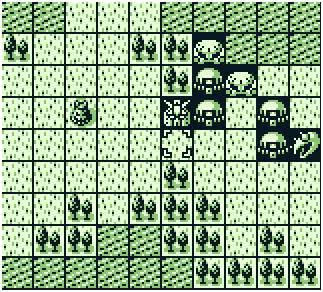
Super Robot Wars
There are a lot of surprising things about Super Robot Wars. Like Langrisser, it came out almost exactly a year after Fire Emblem, and it released on a far more viable platform. In this case, it was on the Game Boy, an interesting starting point for a series praised for its beautiful presentation and deep tactical gameplay. Of all of the series that were inspired by Fire Emblem, Super Robot Wars is probably the most prolific and dependable. Barely a year goes by in Japan without a new release in the series of some kind, with the latest in the series, Super Robot Wars V, released just a couple of months ago in February of 2017. Again, it's easy to see where the game pulls from Fire Emblem, but with its appealing theme and unusual battle system, Super Robot Wars has carved out a comfortable niche of its own. Unfortunately, one of the main selling points of the games has made it difficult for the series to release outside of Japan. The rights to many of the included characters and robots in each game are quite complicated to sort out. As such, only a few of the games have come out overseas. The iOS game The War of Eustrath is an obvious homage to this series.

Shining Force
One of the bigger benefactors of Nintendo's inability to release Fire Emblem outside of Japan was SEGA's Shining Force. Released on SEGA's Mega Drive in Japan in March of 1992, it came almost two years after the first Fire Emblem. In fact, Fire Emblem's sequel hit stores just a week before Shining Force did. It took a full year to release outside of Japan, arriving on the North American Genesis and the European Mega Drive in the summer of 1993. Developed by Sonic! Software Planning and published by SEGA, the game is more similar to Fire Emblem than any of the other games we've seen here. Its creator says it was inspired by the Japanese PC game Silver Ghost, which we took a look at last time. With SEGA's marketing muscle behind it, Shining Force made a fairly big impact in the West. For many console gamers, this was their introduction to the TRPG genre. While the series would end up sputtering out after a dispute between SEGA and the development team, it's well-remembered in the West. I heard more than a few people call Fire Emblem a Shining Force clone by the time Nintendo got around to localizing it.
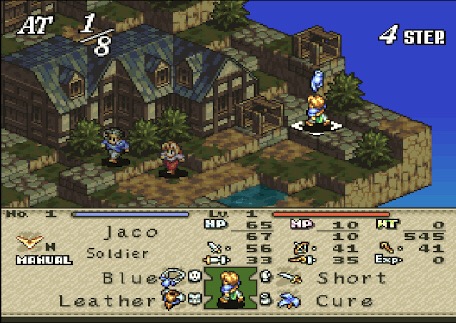
Tactics Ogre
Apart from Fire Emblem, Tactics Ogre is the most influential console TRPG. Developed by Quest and published by Enix, this 1995 Super Famicom release (along with Square's Front Mission) popularized the now-familiar isometric battlefield seen in later games such as Final Fantasy Tactics and Disgaea. Final Fantasy Tactics was developed by the same team as a spiritual successor to Tactics Ogre, and its international release on PlayStation 1 in 1998 stands as one of the most successful TRPGs of all-time in the international market. In a situation not unlike that of Fire Emblem, Tactics Ogre didn't get released in the West until after the games it inspired. As such, it doesn't enjoy nearly the level of reputation it probably deserves, in spite of the fact that it basically set the template for console TRPGs for the next ten or fifteen years following its release.
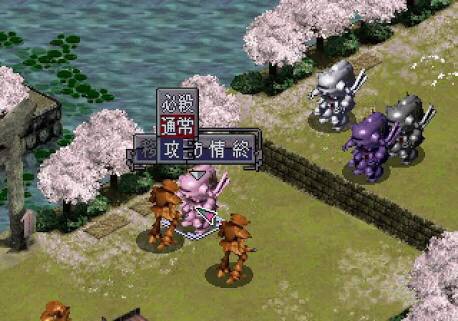
Fire Emblem: Genealogy of the Holy War, Langrisser 3, and Sakura Wars
In the mid-1990s, dating simulations were becoming quite popular in Japan. As developers tried to figure out new ways to differentiate their games from the competition, it was inevitable that someone would hit on the idea of adding dating elements to their TRPG. The only really surprising thing is that three of them appear to have stumbled on it at almost the same time. Fire Emblem: Genealogy of the Holy War was the fourth game in the series, released in 1996 on the Super Famicom. In a now-familiar move, units could build affinity for one another over the course of battles. If their relationship was strong enough by a certain point in the game, they would have a child who would be among your units in the second half of the game. Langrisser 3 and Sakura Wars took a more straightforward route, simply allowing players to cultivate relationships between characters. This element has become quite popular in recent Japanese TRPGs.
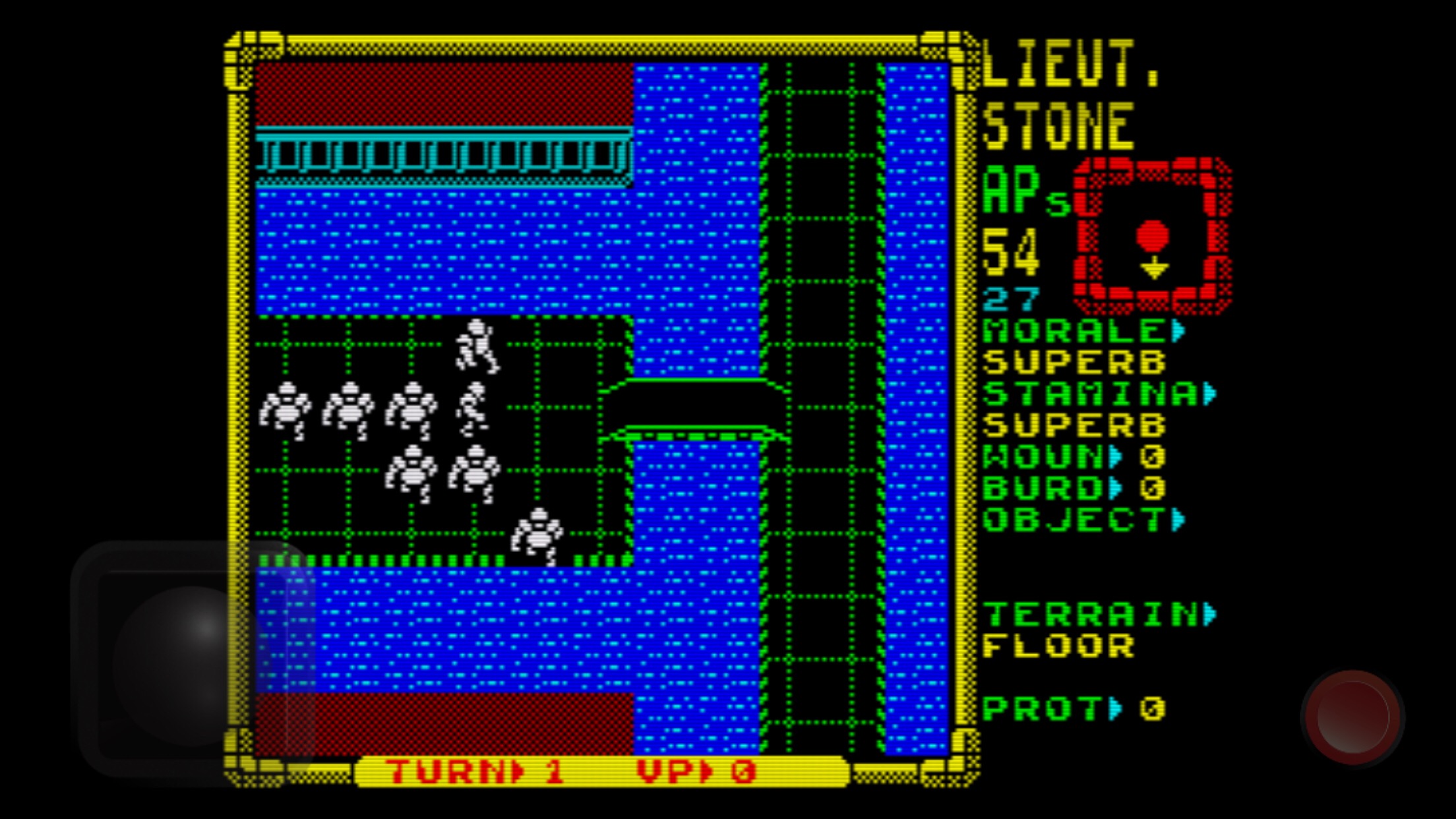
Laser Squad
As I always mention when talking about genres, the border lines can get pretty fuzzy at times. I'm not sure which game deserves to be called the first TRPG in the West, but I can certainly tell you the game that put the genre in the spotlight. For British gamers, 1994's X-COM: UFO Defense was the latest in a fairly long line of brilliant strategy games for home computers from developer Julian Gollop and his team at Mythos Games. Gollop had been developing games since 1983's Time Lords, and most of his work was done in the strategy genre. The most famous series from Mythos Games prior to X-COM was Rebelstar. These were sci-fi, turn-based games for the ZX Spectrum that saw you commanding a squad in various scenarios. 1988's Laser Squad built on the ideas from that series, and we can see many things that would end up in X-COM established in this game.
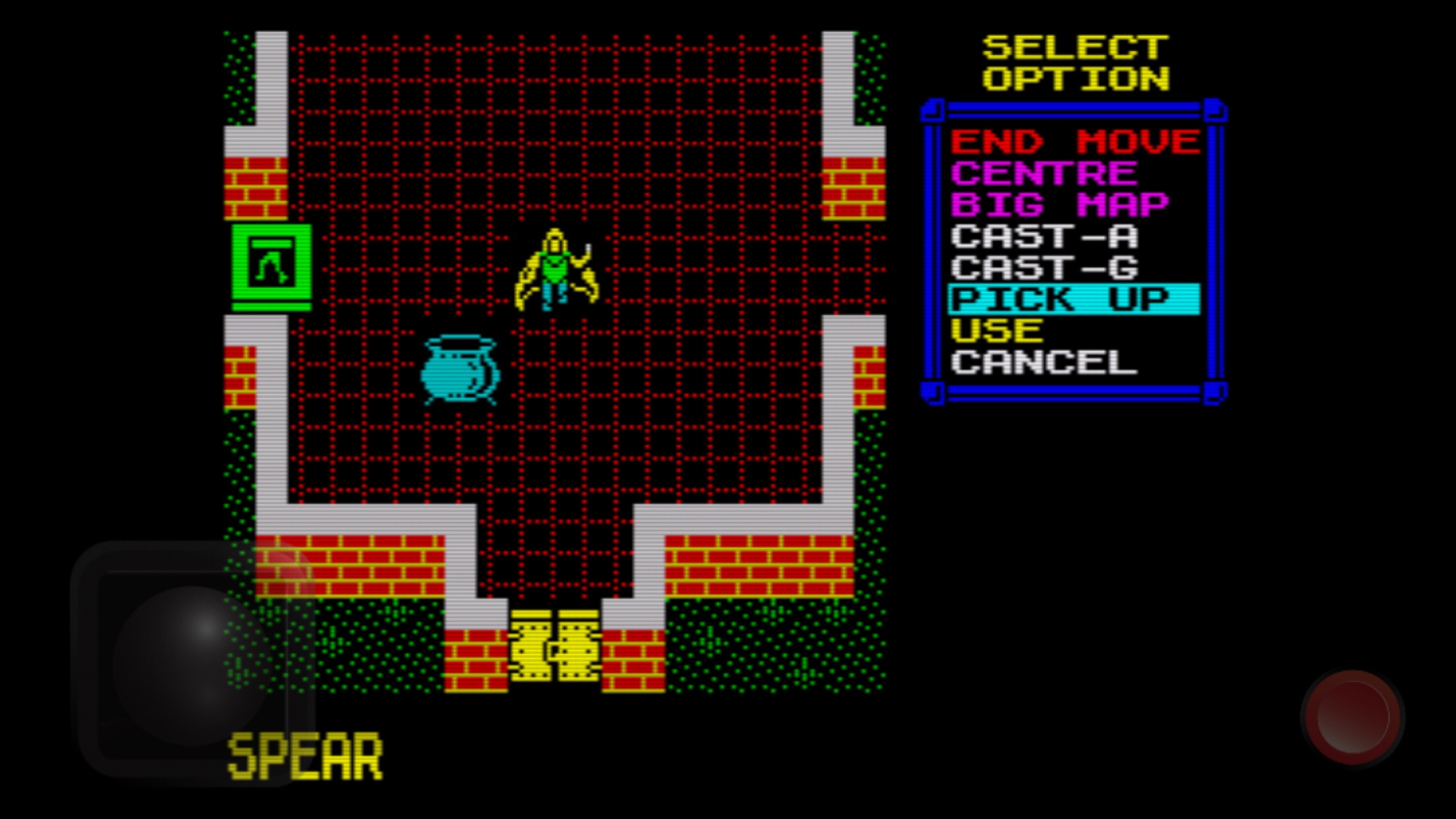
Lords of Chaos
But before we get to X-COM, there's also the matter of Lords of Chaos, another Julian Gollop game. This one was released in April of 1990, the same month as Fire Emblem. It's noteworthy in that it's the first Gollop strategy game that could reasonably be classified as a TRPG. Your main character is a wizard who uses spells and creatures to achieve various goals. Your wizard will earn experience points as you play, which can be spent to increase various stats. It's actually pretty rare for Gollop to dip into the fantasy genre. Lords of Chaos was a sequel to a game called Chaos: The Battle of Wizards, but that game lacked any sort of leveling mechanic. Gollop would return to this series a couple more times over the years, with the latest release being 2015's Chaos Reborn.
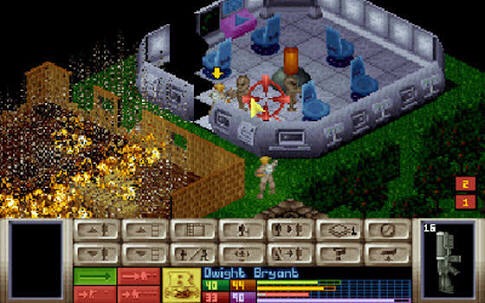
X-COM: UFO Defense
While the works of Gollop and Mythos Games were well-known in the United Kingdom, the developer didn't have a true break-out hit outside of that country until X-COM. The game started as a somewhat modest sequel to Laser Squad that likely would have incorporated some of the ideas in Lords of Chaos and perhaps add a couple of new things of its own. Such was the usual route of Mythos. The most ambitious idea about the game at this stage was to render things from an isometric perspective similar to Populous rather than the usual top-down view. But the developer hooked up with a new publisher, MicroProse, and fresh off the success of Sid Meier's Civilization, they were looking for something a little bigger in scope than what Gollop had originally had in mind. They also wanted it set on Earth, because they felt that was easier for people to relate to.
The developer took those ideas into account and came back with X-COM, a TRPG that puts you in control of a global defense force trying to push back an alien invasion. Not only do you need to manage the individual battles, you also need to generate and invest your resources wisely to ensure your troops, research, and other defenses are up to snuff. While your squad doesn't have any defined characters in its ranks, every soldier has a name and it's easy to get attached to them over a period of time. It's an utterly brilliant game and you could make a pretty strong case for it being one of the best ever in the genre. X-COM was a smash success and proved to be a major influence on the TRPG genre in the West. Even games outside of the genre like Fallout often list it as a source of inspiration.

Jagged Alliance
X-COM wasn't the only excellent TRPG series to kick off in 1994, though. Sir-Tech's Jagged Alliance isn't nearly as famous or successful as Mythos's alien-hunting masterpiece, but it's still an excellent game that added its own interesting ideas to the mix. As with X-COM, you need to manage resources and take care of more than just the battles themselves. In Jagged Alliance, you're battling against an opposing force for control of a special miracle tree that only grows on one island. You need to train and equip a squad of mercenaries and take over territory until you can finally put a stop to the villainous Lucas Santino and his goons. There are 60 different mercenaries you can try to hire for your team, though you can only have 8 of them at any given time. The coolest wrinkle in this game is that each of those mercenaries has their own personality, and you'll have to consider not only how well their skills complement each other but also whether or not they can actually stand each other. Of course, you'll need to keep them paid, and the more experienced they get, the more it will cost you.
Collectively, these games and their sequels proved to be the most significant TRPGs of the 1990s, defining and popularizing the genre. While I've skipped over some beloved titles like Vandal Hearts, the aim here was to present the most historically important examples. We'll pick this history series back up next month with a look at the significant TRPG titles of the 2000s. Be sure to let me know what you think in the comments below, and if there are any 1990s TRPGs I missed that you want to make a case for, I absolutely encourage you to do so. As for me, I'll be back next week with an RPG Reload File for Dragon Quest 3. As always, thanks for reading!
Next Week's Reload: Dragon Quest 3 [$9.99]
A SKT venceu a KT em mais uma final da LCK neste sábado (22). A série vencida por 3-0 pela tricampeã Mundial mostrou novamente a supremacia da equipe no mundo.
Para você que não conseguiu acordar às 5 horas da manhã e assistir os jogos, o Mais e-Sports separou o replay completo dos jogos e também os melhores momentos para você se deliciar com essa grande final!
Antes de tudo, se delicie com a abertura da grande final:
Curtiu? Siga o Mais e-Sports nas redes sociais e não perca todas as novidades do MSI 2017 no Brasil!
The post Veja – Replays e melhores momentos da grande final da LCK appeared first on Mais e-Sports.
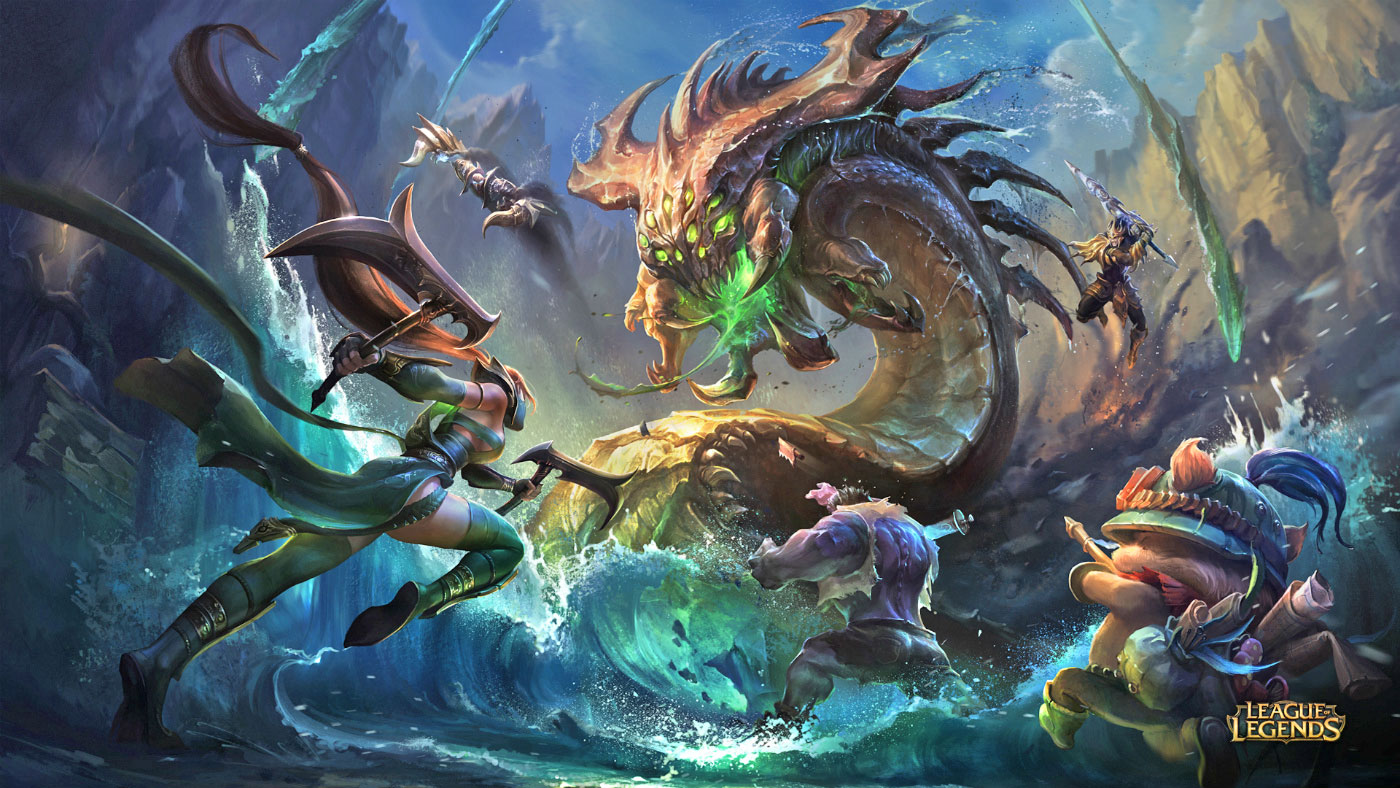 In terms of sheer minutes watched, League of Legends has been the most popular game on Twitch ever since the livestreaming platform launched in 2011. In fact, there are so many channels for the game, Twitch had to build out a special interface just s...
In terms of sheer minutes watched, League of Legends has been the most popular game on Twitch ever since the livestreaming platform launched in 2011. In fact, there are so many channels for the game, Twitch had to build out a special interface just s...
 Our fingerprints are quickly replacing PINs and passwords as our primary means of unlocking our phones, doors and safes. They're convenient, unique, and ultimately more secure than easily guessed or forged passwords and signatures. So it makes sense...
Our fingerprints are quickly replacing PINs and passwords as our primary means of unlocking our phones, doors and safes. They're convenient, unique, and ultimately more secure than easily guessed or forged passwords and signatures. So it makes sense...
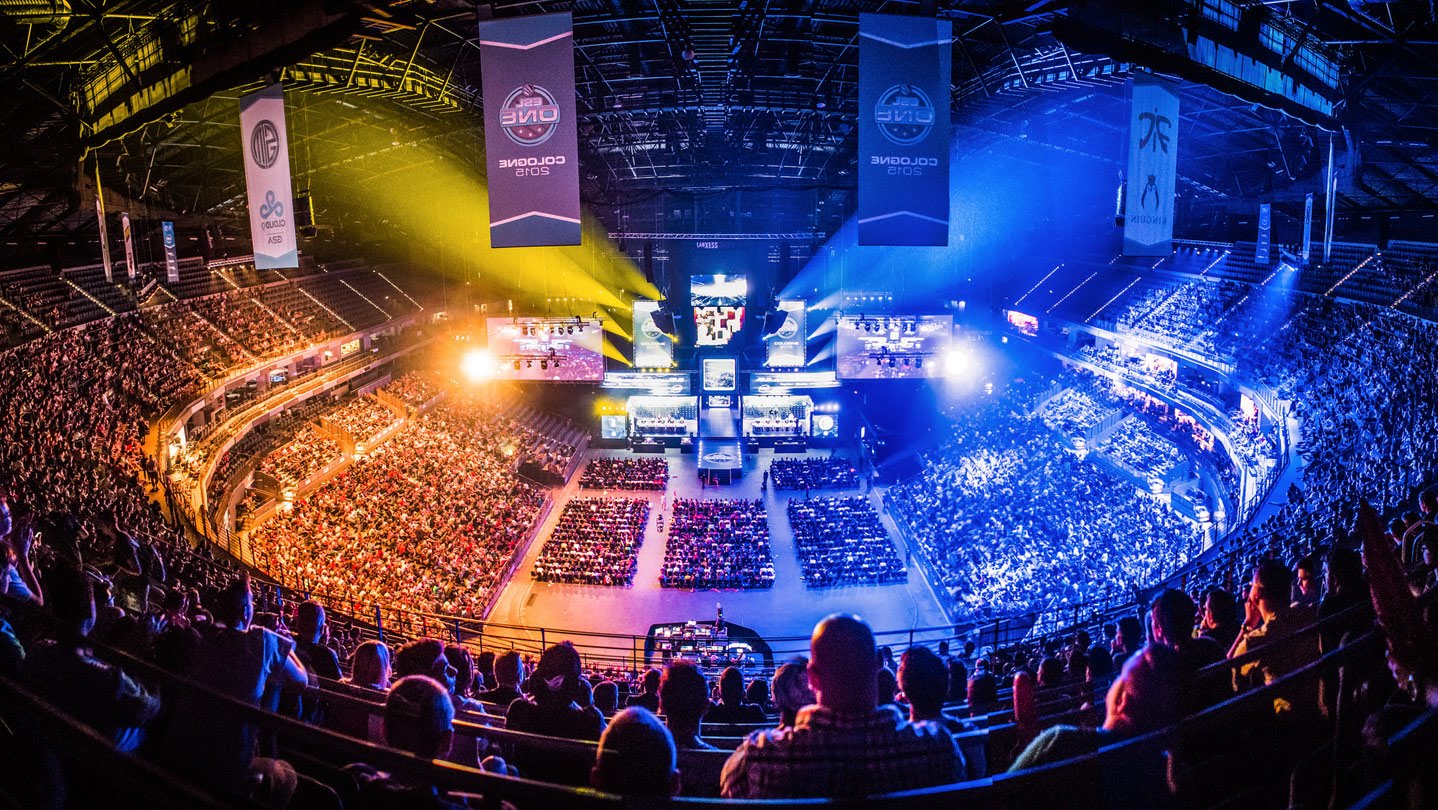 ESL is bringing its live competitive gaming channel, eSports TV, to PlayStation Vue. For the uninitiated, PlayStation Vue is Sony's internet-based TV streaming app, offering viewers cable-like online TV packages. As the world's largest eSports compan...
ESL is bringing its live competitive gaming channel, eSports TV, to PlayStation Vue. For the uninitiated, PlayStation Vue is Sony's internet-based TV streaming app, offering viewers cable-like online TV packages. As the world's largest eSports compan...

É o que eu sempre falo, mulher casa pra ser feliz e homem casa pq felicidade tem limite
The post Ouça sempre as palavras sábias do seu Pai appeared first on Trollando.com.

Confesso a vocês que também estou jogando lolzinho e já ganhei 5 kilos e meu cabaço de volta
The post Nem todos os jogadores de lol são iguais appeared first on Trollando.com.


Today, publisher Square Enix announced that the previously announced free I Am Setsuna DLC content for Nintendo Switch, titled Temporal Battle Arena, is set to launch on April 13th, aka this Thursday. The DLC will be ...Read More
The post I Am Setsuna Nintendo Switch Exclusive Free DLC Temporal Battle Arena Launches April 13th by Tyler Fischer appeared first on DualShockers.